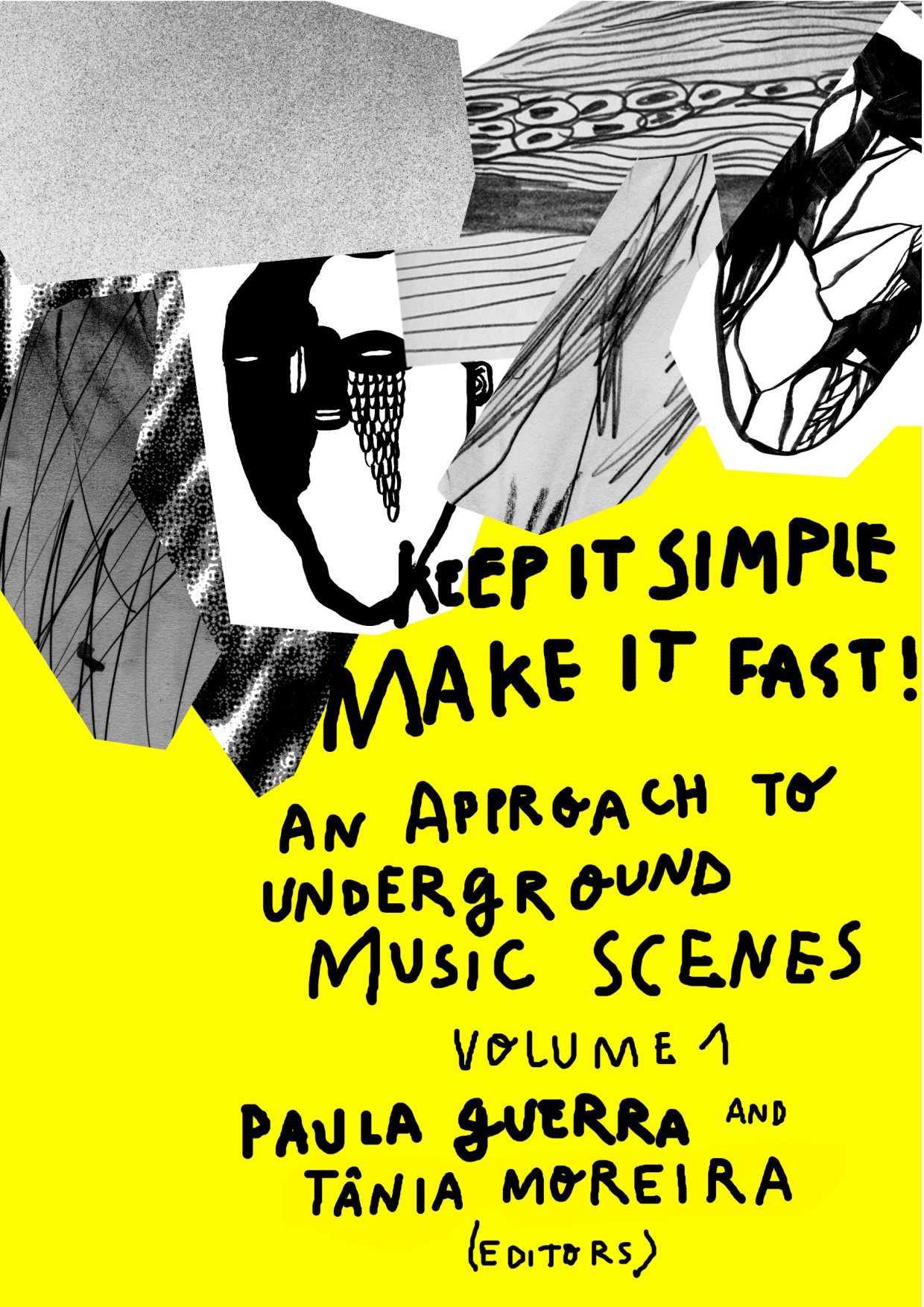Keep It Simple, Make It Fast! An Approach to Underground Music Scenes, 4 vols (2015-2019)
Filed under proceedings | Tags: · aesthetics, diy, gender, music criticism, music history, punk, rock, underground

Proceedings from a series of conferences, Keep it Simple, Make it Fast! (KISMIF), held in Porto and dedicated to the analysis of punk manifestations in Portugal and elsewhere since the 1970s.
Edited by Paula Guerra (1-4), Tânia Moreira (1-3) and Thiago Pereira Alberto (4)
Publisher Universidade do Porto, Porto, 2015, 2016, 2017, 2019
Open access
ISBN 9789898648495 (vol 1), 9789898648631 (vol 2), 9789898648884 (vol 3), 9789895417919 (vol 4)
584, 297, 288, 592 pages
Conf. review: Christine Feldman-Barrett (Volume!, 2016).
Volume 1 (17 MB)
Volume 2 (10 MB)
Volume 3 (9 MB)
Volume 4 (304 MB, updated on 2019-11-8)
David Novak: Japanoise: Music at the Edge of Circulation (2013)
Filed under book | Tags: · aesthetics, ethnomusicology, feedback, improvised music, japan, listening, music, music criticism, music history, musicology, noise, performance, technology

“Noise, an underground music made through an amalgam of feedback, distortion, and electronic effects, first emerged as a genre in the 1980s, circulating on cassette tapes traded between fans in Japan, Europe, and North America. With its cultivated obscurity, ear-shattering sound, and over-the-top performances, Noise has captured the imagination of a small but passionate transnational audience.
For its scattered listeners, Noise always seems to be new and to come from somewhere else: in North America, it was called ‘Japanoise.’ But does Noise really belong to Japan? Is it even music at all? And why has Noise become such a compelling metaphor for the complexities of globalization and participatory media at the turn of the millennium?
In Japanoise, David Novak draws on more than a decade of research in Japan and the United States to trace the ‘cultural feedback’ that generates and sustains Noise. He provides a rich ethnographic account of live performances, the circulation of recordings, and the lives and creative practices of musicians and listeners. He explores the technologies of Noise and the productive distortions of its networks. Capturing the textures of feedback—its sonic and cultural layers and vibrations—Novak describes musical circulation through sound and listening, recording and performance, international exchange, and the social interpretations of media.”
Publisher Duke University Press, Durham, 2013
Sign, Storage, Transmission series
Creative Commons BY-NC-ND 3.0 License
ISBN 9780822353799, 0822353792
x+292 pages
via author
Reviews: Shaun McKenna (Japan Times, 2013), Scott McLemee (Inside Higher Ed, 2013), Nana Kaneko (Ethnomusicology Rev, 2014), Andrés García Molina (Current Musicology, 2014), Max Ritts (Society+Space, 2014), Jonathan Service (Japan Forum, 2014), Rosemary Overell (Perfect Beat, 2014), Patrick Valiquet (Popular Musicology, 2014), Owen Coggins (Harts & Minds, 2014), Seth Mulliken (Sounding Out!, 2014), E. Taylor Atkins (Asian Music, 2015), Shelina Brown (Notes, 2015), Jennifer Milioto Matsue (Am Anthropologist, 2015), Carolyn S. Stevens (Am Ethnologist, 2015), Christopher Tonelli (Sound Studies, 2016), Benjamin Harley (Enculturation, 2016), Etienne RP (2017).
Book website, with supplemental media
Publisher
WorldCat
Katherine Hirt: When Machines Play Chopin: Musical Spirit and Automation in Nineteenth-Century German Literature (2010)
Filed under book | Tags: · 1800s, aesthetics, android, automation, history of literature, language, literature, machine, mechanics, music, music history, musical instruments, philosophy, phonograph

“When Machines Play Chopin brings together music aesthetics, performance practices, and the history of automated musical instruments in nineteenth-century German literature. Philosophers defined music as a direct expression of human emotion while soloists competed with one another to display machine-like technical perfection at their instruments. This book looks at this paradox between thinking about and practicing music to show what three literary works say about automation and the sublime in art.”
Publisher De Gruyter, 2010
Interdisciplinary German Cultural Studies series, 8
ISBN 3110232405, 9783110232400
170 pages
via alcibiades_socrates
Abstract of the thesis (2008)
Comment (0)
